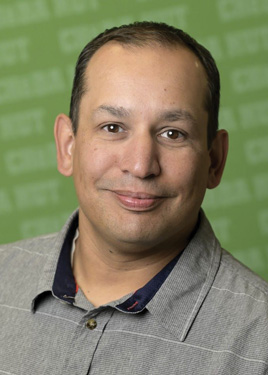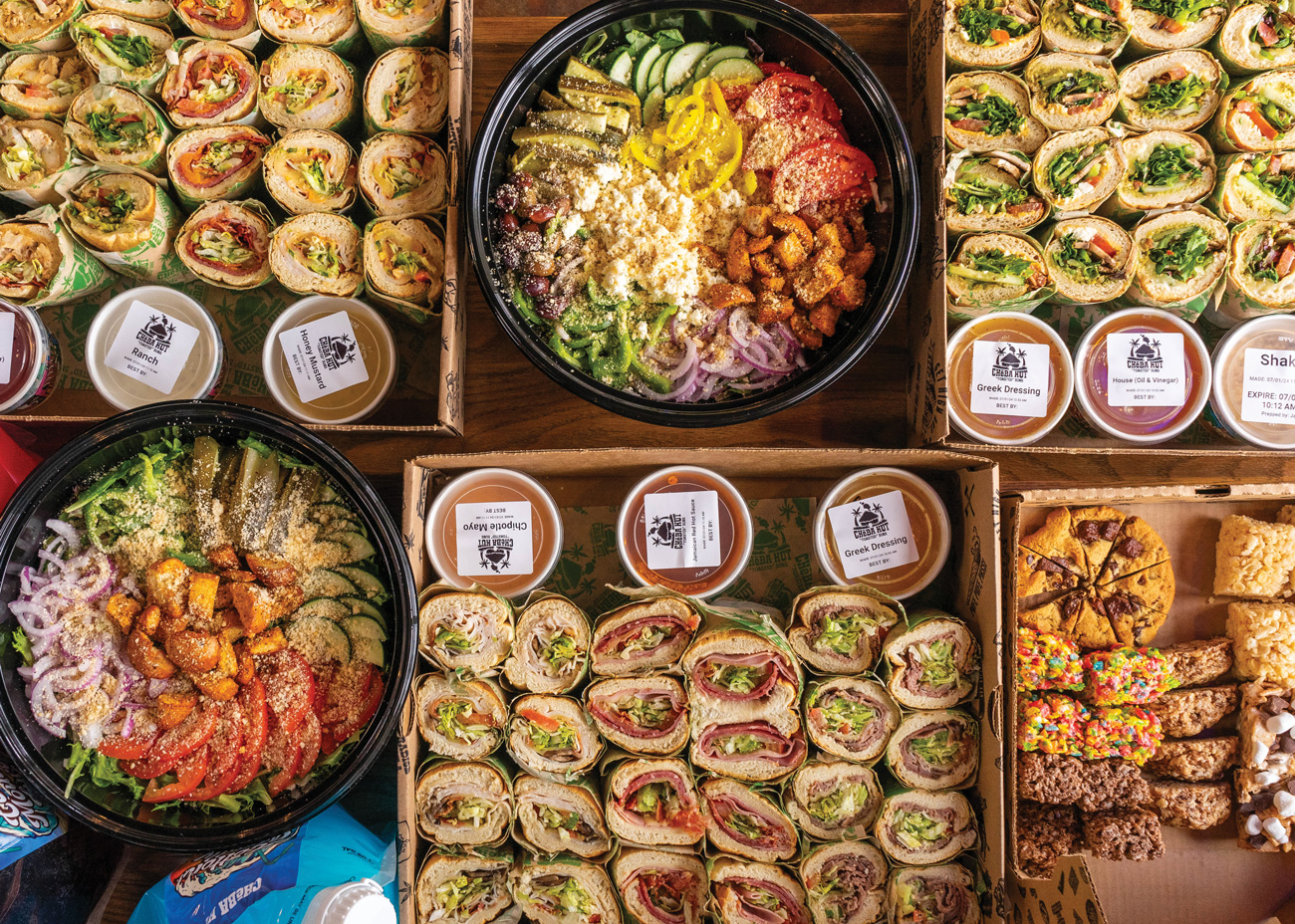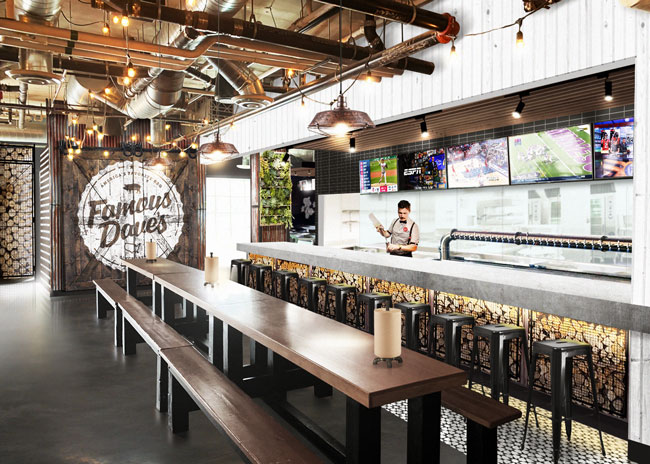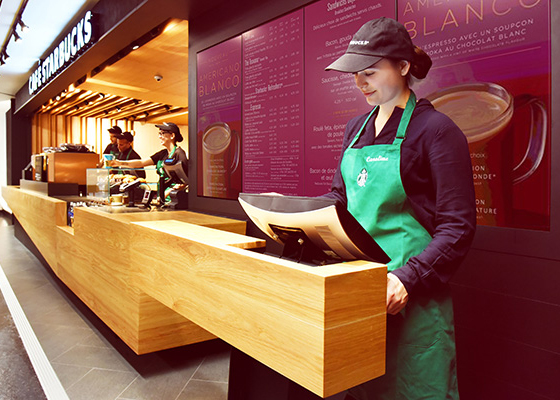 Rocky GuptaLaunched in 1998 in Tempe, Ariz., as a marijuana-themed sub sandwich shop, Cheba Hut has stood the test of time by remaining nimble and leaning into its fun, counterculture vibe. The brand moved its headquarters to Fort Collins, Colo., and began franchising in 2000. It now has 76 stores across 16 states, with the heaviest concentrations in Arizona, Colorado and Texas. All but two units are franchised, and after a nearly two-year hiatus, franchise sales have ramped up again with plans to take Cheba’s unique toasted subs, munchies and craft beer experience nationwide. Sixteen new stores opened in 2024 and the brand targets 200 units by 2030.
Rocky GuptaLaunched in 1998 in Tempe, Ariz., as a marijuana-themed sub sandwich shop, Cheba Hut has stood the test of time by remaining nimble and leaning into its fun, counterculture vibe. The brand moved its headquarters to Fort Collins, Colo., and began franchising in 2000. It now has 76 stores across 16 states, with the heaviest concentrations in Arizona, Colorado and Texas. All but two units are franchised, and after a nearly two-year hiatus, franchise sales have ramped up again with plans to take Cheba’s unique toasted subs, munchies and craft beer experience nationwide. Sixteen new stores opened in 2024 and the brand targets 200 units by 2030.
Rocky Gupta, director of design and construction development, joined Cheba Hut in 2023, part of the company’s move to develop the infrastructure required to continue growing and effectively support its budding franchise community. He fills us in on how it’s going.
Cheba Hut seems to have grown up in many ways as a brand. What have been some of the biggest changes that are facilitating its growth?
RG: The recent shift to develop our infrastructure and handle key functions internally, such as real estate and development, has been a big one. A lot of time and care have been spent developing systems and building up our team here at HQ — we don’t use the word corporate; it’s a $25 fine if anyone uses the term corporate. We’re obviously a fun brand and don’t take ourselves too seriously, but as our founder likes to say, “We’re not professional stoners, we’re stoner professionals.” So, it’s always been important to maintain our unique and authentic culture but to do that with a high level of professionalism. Cannabis is central to the brand’s image, but the bigger part of Cheba is our inclusive, welcoming, come-as-and-who-you-are vibe. As we’ve matured systems-wise and worked to create scalability, we haven’t changed the experience or strayed from our core values or our commitment to serving fresh, high-quality, craveable food.
Besides the cannabis theme, what helps differentiate Cheba Hut from other sub sandwich concepts?
RG: The amount of business we do in-store is a major differentiator, and that’s due in part to the fact that almost all of our stores include a full bar. When the pandemic hit, we were already well situated for the takeout and delivery model. We leaned into that and grew off-premises sales to about 35% of total. But having a bar is unique and an element of our concept that enables us to build strong sales at dinner and late night. We’ve really leaned into that, as well. Systemwide, bar sales contribute roughly 10% of sales. Bars are now a standard element in the buildout, and over the past several years a lot of our existing locations have been retrofitted to include bars. We do a lot with local craft beers, and we have a special cocktail menu designed to go with our theme. The bars provide an opportunity to maximize the Cheba hospitality experience, giving guests the option of hanging out, watching a game, spending a couple of hours with us and feeling really welcomed.
Presumably, your units are larger than typical sub shop units?
RG: Yes, but our sites actually vary a lot. We of course have our standards, but we try not to be cookie cutter. A size that works well for us is 2,300 to 2,800 square feet, with a 50- to 60-seat dining area and 8- to 12-seat bar. But again, it varies. Our newest unit, opened last November in Oklahoma City, has a beautiful 18-seat, U-shaped bar designed to be a focal point. It’s a downtown location with a vibrant walk-by and nightlife scene, so we put a larger bar there, and it’s been well received.
What types of markets work best for the brand?
RG: Ideally, we look for spots in busy, well-known centers, especially when we’re entering new markets without much brand awareness. Where we’re already known, people tend to seek us out so we can be more flexible in terms of real estate. We also do very well in college towns, where we look for campus-adjacent locations easily accessible to students, but to other groups, as well. We’re very, very strong in the 20- to 40-year-old demographic so we make sure we take care of and cater to that group, which encompasses a wide range of folks, from students and blue-collar workers to office professionals.
 Images courtesy of Cheba Hut Tosted Subs
Images courtesy of Cheba Hut Tosted Subs
To what extent does being a cannabis-themed brand create development challenges, and what strategies do you use to overcome them?
RG: It definitely can create challenges, usually due to the misconception that we’re actually selling cannabis in our food — which we don’t. We just embrace the culture, have fun around it and sell great food with great hospitality in welcoming stores. We love to get out to markets, meet with landlords and brokers and educate them, show them that we’re a real company doing real numbers. When we show them our demographics, our beautiful buildouts and our AUVs, we get their attention. But I’d be lying to you if I said we didn’t encounter resistance in some locations. We have to be very clear and concise in telling people what we are, which is a great experience with a 26-year-old history of success, and what we aren’t.
Is the spread of legalization of marijuana helping to grease the development wheels?
RG: In some respects, yes. It’s one less barrier to entry in some locations, particularly on the real estate side. But we’ve actually always done well even in quite conservative locales. At the end of the day, the experience, the food, drinks, vibe and service are universally appealing. That’s what fuels our sales and our growth.
About those AUVs. They’re very impressive for a sub sandwich shop. Tell us more.
RG: Our average ticket is $21 and our AUV for 2024 was right around $2.35 million. Our goal is to reach $3 million AUVs by 2030. We’re planning for that and designing for that, including testing new pick-up windows and introducing a design refresh in 2025. When you compare our buildout cost, which typically runs $650,000 to $850,000 or $900,000, and compare it against our AUVs, it’s a fantastic ratio.
Let’s say you have the munchies bad. What’s your personal go-to Cheba Hut order?
RG: My cop-out answer is to hit the secret stash, which are off-menu specials unique to each location. But from the regular menu, it’s the KGB, a roast beef and horseradish sub with green pepper, ’shrooms, Swiss cheese, lettuce, tomato, onion, pickle and house dressing. And it’s got to have extra horseradish. On the side, it’s spicy dill pickle chips and, if my wife’s not with me, Kool-Aid. For dessert, it’s a Goo Ball — a Rice Krispie treat-style ball with marshmallow, peanut butter, honey and cocoa. They’re the greatest things ever.



